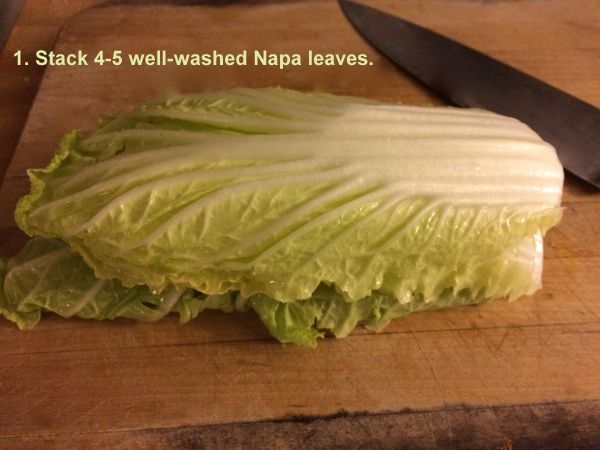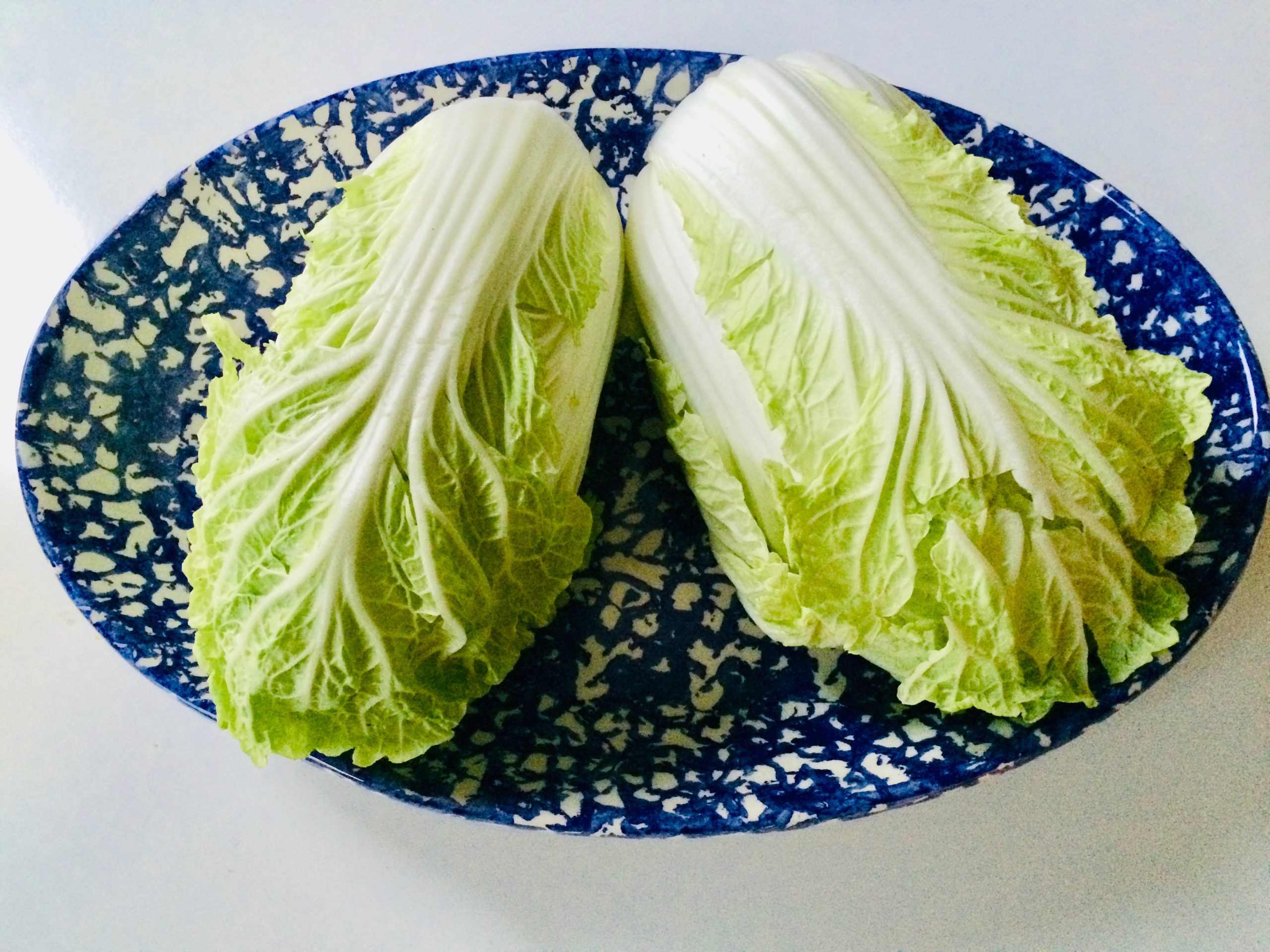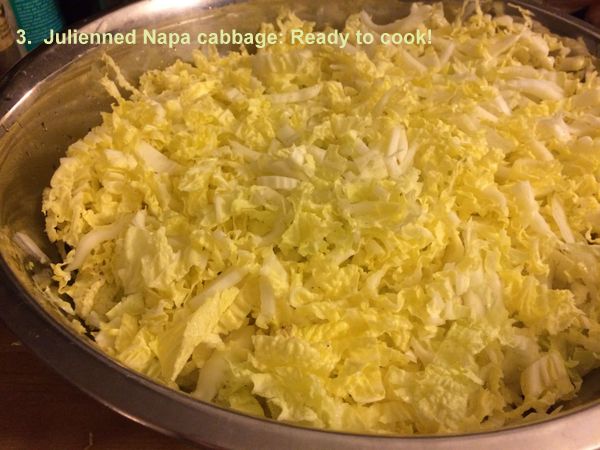When I attend health and wellness conferences and trainings in Manhattan or in the greater New York area, I like to bring my lunch. Sure, I could eat out somewhere, but with 100 food sensitivities, I prefer having control over the food that I eat rather than suffer the consequences (in my case, bloating, fatigue, digestive distress or unsightly rashes) the rest of the day.
For sustained energy, I eat protein, fat and fiber at every meal. And this particular combination—sardines, avocado and braised Napa cabbage—fits the bill. It’s a quick brown bag lunch to “assemble” since I usually make the braised Napa cabbage a day or two in advance.
While I’m not a fan of the common cabbage, I love Napa cabbage, which does not smell or taste “cabbage-y”. Its cylindrical-shaped head of tightly packed leaves are longer, softer, mild-tasting and almost sweet when cooked. Napa cabbage is also budget-friendly ($1.29 / pound where I shop), filling and delicious. Bonus: it’s listed as #4 on the Environmental Working Group’s “Clean 15” list of produce least likely to hold pesticide residue.
Also known as Chinese cabbage, Napa cabbage is in the brassica family that includes broccoli, kale and Brussels sprouts. It is an excellent source of vitamin K (beneficial for healthy blood clotting); vitamin C (great for boosting immunity and for fighting inflammation); vitamin B6 (helps detoxify the liver and supports the brain and nervous system); and folate (key in the production of red blood cells and in supporting heart health and the nervous system). It’s also packed with cancer-fighting antioxidants and loaded with fiber, which helps stabilize blood sugar and optimize elimination.
Here is my fast and tasty brown bag lunch “recipe” that keeps me on even keel through the afternoon. For the record, I always pack my lunch in a Pyrex glass container—here’s why.
Drain 1 tin of sardines (packed in water; I like this brand) and place sardines in a 16 oz glass container.
Add one-third to one-half of a ripe avocado: roughly dice avocado and layer on top of sardines.
Add 1 to 2 cups (whatever will fit) of braised Napa cabbage (see recipe below) over the avocado.
Drizzle with a quality extra-virgin olive oil and lightly sprinkle with coarse-ground Celtic sea salt.
Place a piece of parchment paper over the container; now put the lid on the container. (The parchment paper ensures a tighter seal).
Enjoy!
Braised Napa Cabbage
3 to 3-1/2 pounds of Napa cabbage, end(s) trimmed off and discarded
4-6 garlic cloves, thinly sliced
2 tablespoons extra-virgin olive oil or duck fat
1/2 to 3/4 cup water, or, as needed)
Celtic sea salt to taste
Peel the cabbage leaves from the base (try to keep each cabbage leaf intact). Place all the leaves in a large bowl. Add water to cover. Wash leaves well, drain, and place all cabbage leaves in a colander or salad spinner.
Stack 4 to 5 cabbage leaves on top of one another.

To julienne: slice through the stacked cabbage—apx. 1/4-inch thickness—down the length of the stacked cabbage.
Place all julienned Napa cabbage in a large bowl.
To cook: Heat 2 tablespoons of olive oil or duck fat in a Dutch oven or large heavy-bottomed pot over medium-high heat. When olive oil or duck fat is hot—but not smoking—add garlic and stir quickly, about 30 seconds. Add julienned Napa cabbage, stirring well to coat with olive oil or duck fat, about 3 minutes. When cabbage begins to stick, add 1/2 cup water (or more water, as needed). Let the mixture come to a boil; reduce heat to low, cover and cook another 10-15 minutes until the cabbage is soft. Lightly sprinkle cabbage with Celtic sea salt. Remove cabbage with a slotted spoon and serve.
Note: During cooking, Napa cabbage can release a lot of water. That’s fine. Since nutrients leach into water, I like to drink warm Napa cabbage “juice”, which I find slightly sweet-tasting, soothing and detoxifying.



